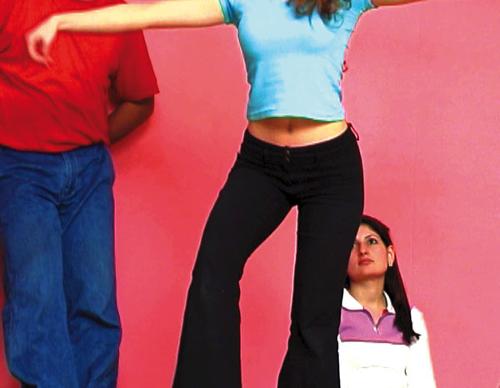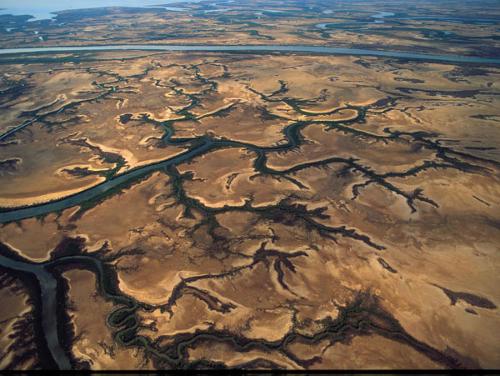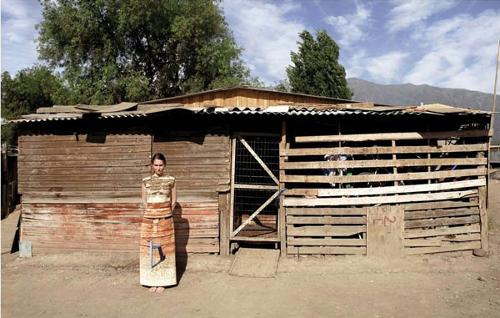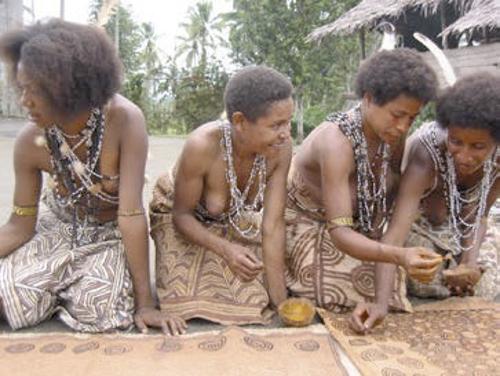
This exhibition captures some of the vistas we associate with Port Adelaide, an area in danger of losing its identity in the course of the major residential redevelopment currently taking place, most of which is unsympathetic to the historic site. Artists in this exhibition reflect on aspects of the Port and the changes that are occurring. Before the redevelopment began artists had begun to move to the Port and breathe life into its streets and spaces.
Annalise Rees and family have established a hive of studios and an art supply shop in a wonderful, historic multi-level building, now known as Ripple Studios, sensitively renovated by Annalise's engineering father. Several of the artists in this project work from this base. Ken Orchard's expansive panoramas of the Port in ink, shellac and pastel and pen on paper, were painted from Ripple's glass-enclosed viewing room built above the roofline.
Peter Johnson works tough Port Adelaide vistas onto his large, hand built stoneware forms at his long-established studio near the old wharves, using the surfaces as a canvas. He has refused to become decorative in his paintwork, maintaining a solid and commendable painting practice in 3D, on ceramic.
Patinas of age, peeling and weathered surfaces are the subject of works in acrylic and sand on board by Brad Holland while the industrial features of the area are the subject of Arthur Phillips' 'Landscape of industry'. Lynn Wood takes an aerial perspective in 'Old Port squeeze', a work in oil and paper on canvas and Sandra Elms uses her graphic skills, working with acrylic on canvas to make emblematic notations of some of the Port's identifying architectural features.
Well-known local personalities are the subject of works such as Deidre But-Husaim's, Dave 'D – 5015', a work in oil on linen and Deb Trusson's portrait, 'Miss Flowerpottz Epic Adventure'.
Kalyna Flowerpott, a significant artist in her own right is actively involved in a long and increasingly desperate campaign for the historic Hart's Mill in the Port to become a Community Arts Centre with an Indigenous interpretive centre and community garden rather than being converted to exclusive apartments.
Di Fenwick's work 'Does this path have a heart', considers the history of the area as well as the location now.
Long, expansive views of the Port and distinctive buildings are the subject of masterly works in oil and charcoal on board by Annalise Rees, revealing her long familiarity with the area. In other works in oil, pastel and charcoal in yellow and black, Annalise reverses her usual tones. In 'The Port (high rise apartments with harbour views)' she critiques the unsympathetic development in the Port.
The show works well overall, due to the curator's desire to expose the layers of meaning an older city site can accumulate and her resulting selection of a great variety of works and media. The artists respond to what gives the Port its distinctive personality. Its hidden treasures, its artists, its local personalities, its vistas and its histories. Its wonderful mix of industry, unique buildings and street and harbourscapes are exactly what may attract buyers, but if these qualities are removed developers could find themselves with a barren site to sell. Artists are insightful and in this compelling exhibition we are given a rich sense of their love of a special place in South Australia.
This site was and in some ways still is a realm where lives were spent on tough work leaving me with a yearning in this show for the physical energy and sweat evident in works about industrial sites by an artist such as Jan Senbergs.
The area does have strong Indigenous connections and this is noted in a glimmer in one particular work. No doubt, should Kalyna Flowerpott and her supporters be successful in establishing a community centre, we will see more cultural projects engaging with the life of this important area.












